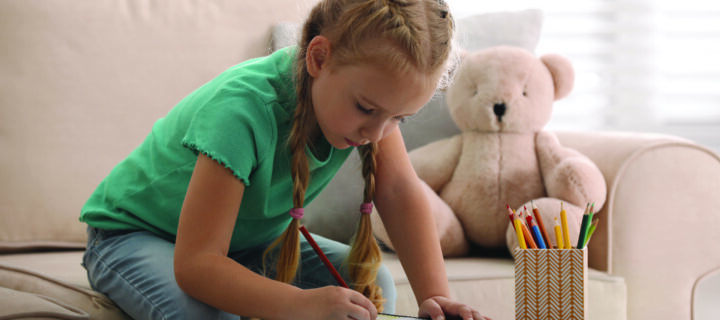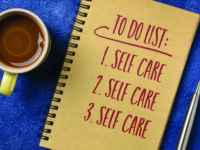Summertime conjures up memories of family vacations, more time together, and long summer days devoid of time constraints. All good, but did you know that you can also take advantage of this summer to kick-start your child’s mental health?
Written by Morgan Dickerson, MSW, LCSW
Take a moment to imagine your child’s mood, self-esteem, and behavior changing for the better between now and the time Sunsplash closes. Yes, rapid change IS possible. As a licensed psychotherapist, I’ve worked with thousands of individuals, couples, and children and have spent many hours researching how to make lasting changes quickly and easily (keyword: lasting). Read on to get three easy tips for improving your child’s mental health.
- Create a Self-Care Routine
A more recent buzz word in the psychology community, self-care is not just about making sure we exercise regularly and eat healthy foods; it is also about caring for one’s mental, emotional, and spiritual health. Chances are you’ve heard about self-care and maybe have your routine; It’s not too late to extend these self-care skills to your children. After all, learning to care for oneself can be taught at any age. For example, we can help teach self-care by creating a morning and evening routine that incorporates healthy ways to self-soothe, scheduling massages, creating daily gratitude lists, practicing meditation (check out the Headspace App), and teaching them about mindfulness.
Quick tip for implementing Self-Care: 5 Senses Mindfulness Game
According to Brown & Ryan (2003), mindfulness improves mood and well-being. So, teaching your kids mindfulness is part of self-care. The concept of mindfulness originated from a popular psychologist by the name of John Kabat-Zinn. When we teach our children to be mindful, we teach them to be in the moment- not in the past and not in the future. Mindfulness keeps us from being consumed by our thoughts and feelings because it creates an emotional perspective (Kannan, Koo, and Hancock, 2015).
A straightforward way to teach mindfulness to your child is to take a mindfulness walk together. Have them tune-in to their five senses while they walk. Being aware of their senses brings the child totally into the present moment, which improves mental health while they have some fun in the sun. Some kids like to use an “I spy” game that’s sensory-related, such as, “I spy with my little eye something that tastes sweet.” Or, “I spy with my little eye something that sounds like a buzz.” Keep going as you go through all the senses: taste, touch, smell, hear, and sight.
- Step out of the Comfort Zone-Creating Mental Stamina
As parents, we want our children to feel as comfortable as possible because we certainly don’t like seeing them struggle. Hello, helicopter parents! I see you. While we all want what’s best for our children, sheltering them from experiencing any sort of discomfort is not so good long-term. The reality is that life is full of ups and downs and unexpected events. If we teach our children something called grit, we can help them to develop internal reserves of inner strength and confidence. These inner reserves give them the power to tackle the more difficult situations they may face.
So, what exactly is this thing called grit? According to Datu, Kig, Valdez, and Eala (2019), grit is having passion and perseverance for long-term goals. Both passion and perseverance are linked to positive academic and psychological outcomes later in life. When one pushes past limitations, even while feeling discomfort and fear, grit is developed. Once we have pushed past our perceived limitations, then we are left with grit, passion, and perseverance- all of which improve our mental health.
Quick Tip To Help Create Mental Stamina: The next time your child is assigned a science project or project of any kind, allow them to drive its creation 100%. Take a step back, help them analyze and brainstorm, then let them know that you believe in their ability to manifest their vision. Your child may need some help to gather supplies and get set-up, and that is okay. Once the groundwork has been laid, wish them well. Then, sit back, grab a late and be ready when (and if) they need more assurance or a little pep talk. This process teaches them to believe in themselves while pushing past perceived limitations. Grit, resilience, and better mental health here we come!
- Find a Compatible Therapist
Are you concerned your child is struggling with anxiety, low mood, depression, or ADHD? Then schedule a session with a therapist ASAP. The earlier your child establishes a therapeutic connection, the better because your child will have more time to make improvements before the next school year. A good therapist will give your child tools for dealing with challenges related to both mental health and life itself. When I work with my clients, I often implement something called cognitive behavioral therapy (also known as CBT). CBT is an evidence-based practice that is quick and easy to learn and can be used at home, at school, with friends, or anywhere they happen to be. CBT improves academic performance and mental health when used as a means of improving mental health and reducing stress, according to Frank, Bond, and Flaxman (2004). Therapy offers helpful tools, tips, and skills and provides support with processing challenges so that your child can adaptively manage the next school year with more confidence.
Quick Tip: Teach Cognitive Behavioral Art Therapy
Teach your child a little CBT this summer. There is a connection between what we think, how we feel, and then how we react or behave. The next time your child is struggling, offer them a piece of paper and some art supplies. Have them draw themselves on the paper (stick figures are okay). Then have them write words next to the picture about their thoughts on the situation or event. Have them also list or mark on the figure how their body felt after they had those thoughts. To shift their mood quickly, briefly discuss with them the concept between thoughts, feelings, and behaviors. See if they can re-frame any of the more challenging thoughts for a rapid change in mood. You’d be surprised how much labeling, identifying, and re-framing thoughts and feelings can help make rapid progress in mental health.





